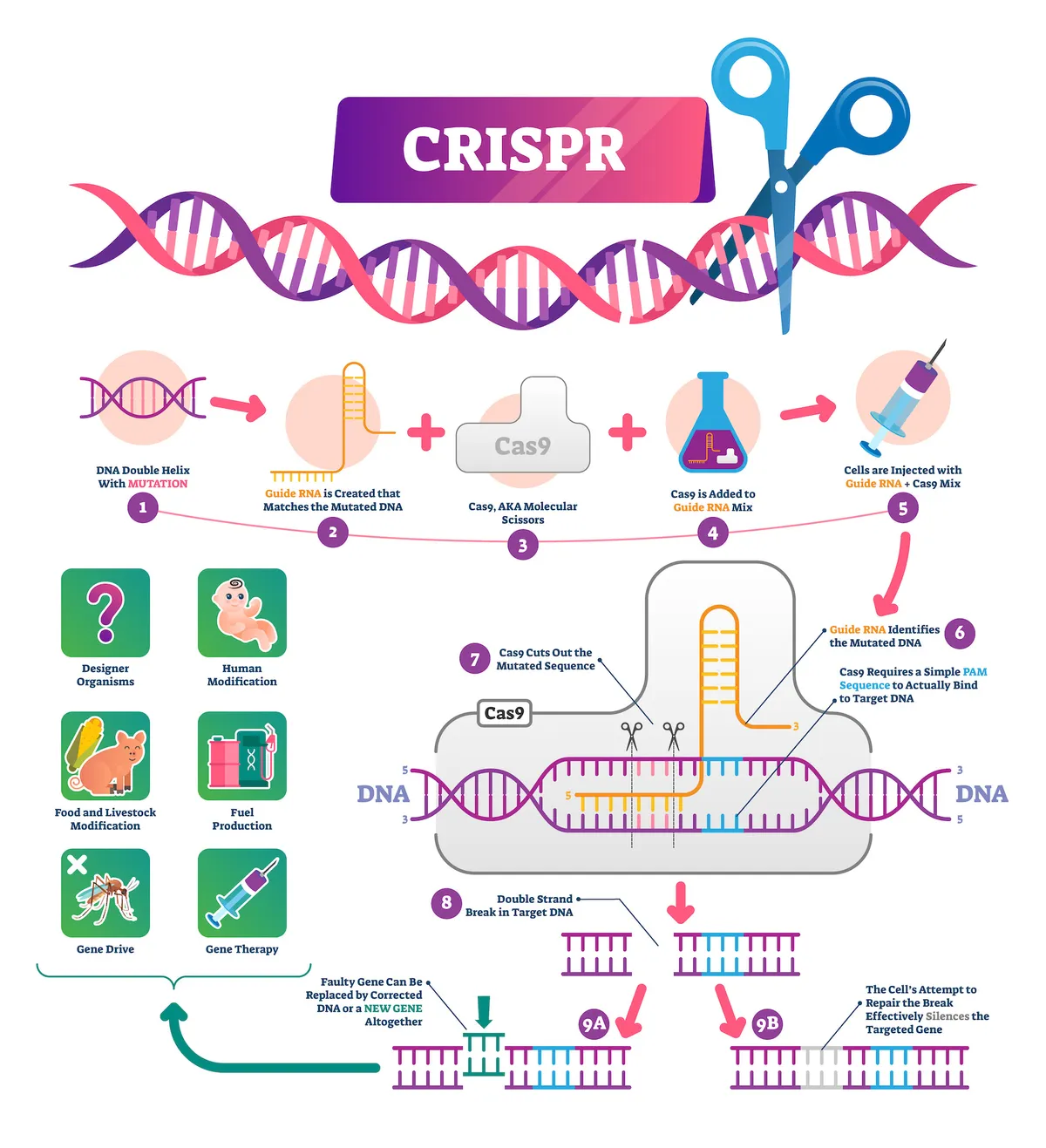Why is RNA important in immunity?
All organisms, from single-celled bacteria to blue whales, have a genome that's made of deoxyribonucleic acid, or DNA.
When it comes to viruses, many use single-stranded ribonucleic acid (RNA). However, certain species (such as rotavirus, which causes gastroenteritis) have a double-stranded RNA genome.
The presence of paired strands of RNA in a cell is considered abnormal (double-stranded RNA (dsRNA) is associated with most viral infections) and might indicate that it's been infected with a virus, which prompts a response from the immune system. As a consequence, potential hosts for viral invaders have evolved to detect double-stranded RNA and launch antiviral responses: enzymes like Dicer will slice up RNA, for instance, while vertebrates release signalling molecules called interferons that block viral replication and attract immune cells.
How is RNA used in CRISPR?
CRISPR genome editing is a technology whereby DNA is cut up with incredible precision so that parts of the DNA can be removed (for example, to correct unwanted mutations), or other parts of DNA inserted. Essentially, CRISPR allows scientists to edit the building blocks of life, much in the same way that computer programmers add or remove HTML code.
It's a technology that can precisely target sequences of letters in DNA, such as part of a gene. It can be used as a tool to create genetically-modified organisms or fix disease-causing mutations in people.
The technology was developed from a natural defence system that pastes a virus's genetic material next to CRISPR sequences in a bacterium's genome, enabling the cell to remember the invader.
Proteins, known as Cas enzymes, use a CRISPR sequence like a Wanted Poster. They recognise and cut up the virus if it tries to reinfect.

Enzymes, such as Cas9, are guided to their target by an RNA copy of the CRISPR sequence, crRNA, which pairs with another molecule, tracrRNA.
Instead of using two components, scientists fuse crRNA with tracrRNA to create a single guide RNA (sgRNA).
Being able to design a guide that directs an enzyme by changing a few RNA letters is easy compared to engineering the far more complex structure of a protein-based enzyme, which is why CRISPR technology is so revolutionary.
How do mRNA vaccines work?
RNA has also been behind one of the biggest revolutions in public health, mRNA vaccines, helping block the spread of SARS-CoV-2 coronavirus over the COVID-19 pandemic.
Pre-COVID, the majority of approved vaccines worked by giving a person a dead or disabled virus, which would expose them to foreign antigens. These are antibody-generating molecules that the immune system could learn to recognise.
[image id="129804" size="landscape_thumbnail" align="none"] Infographic showing how mRNA vaccines work © Getty imagesAn mRNA vaccine works in a more roundabout way, providing genetic instructions for your body to make the antigen protein itself. The single-stranded RNA can't be injected directly into the blood as it's thermally unstable and vulnerable to enzymes, so the molecules are packaged inside protective bubbles called lipid-containing nanoparticles (LNPs) that merge with cells to deliver the message.
CRISPR tools and mRNA vaccines have revolutionised biotechnology, but they've also led to legal battles over who invented them and therefore has the right to exploit those breakthroughs. Whoever wins, there's little doubt that scientists will continue to harness the versatility of RNA molecules to improve our health.
RNA explained in five bullet points
- RNA's alphabet uses four chemical letters, A-C-G-U
- Unlike DNA, RNA is often a single-stranded molecule
- RNA can work as genes or enzyme-like catalysts
- Making proteins requires several types of RNA
- RNA may have been the first genetic material
Read more about vaccines: